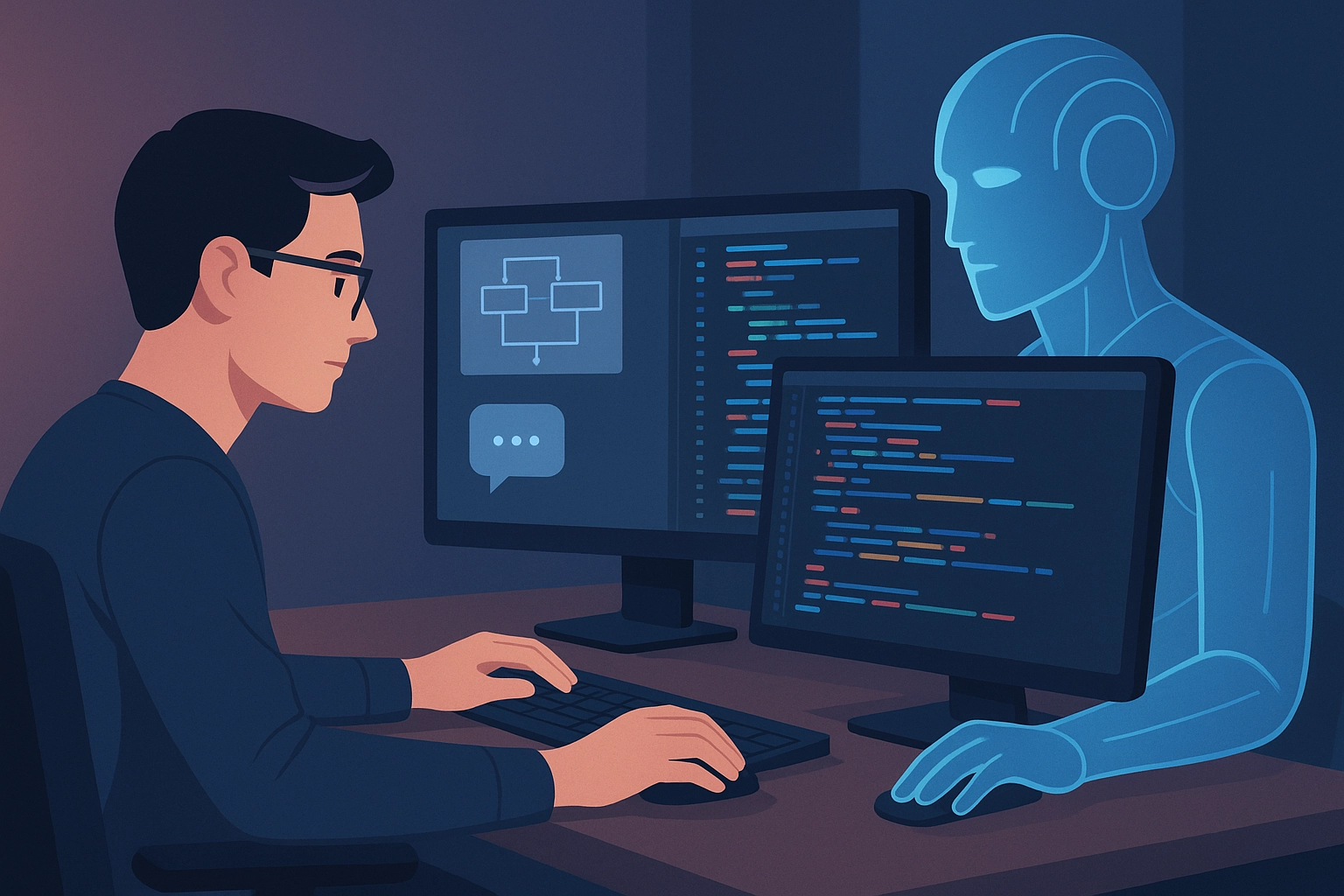Introduction
In just half a year, AI has significantly reshaped the way software is built, tested, and maintained. With breakthroughs in large language models (LLMs), multimodal tools, and IDE integrations, developers are witnessing a revolution in productivity and creativity. This post explores the key developments over the past six months and their implications for developers, teams, and the broader tech ecosystem.
1. The Rise of Multimodal Development Tools
Multimodal AI models—capable of understanding images, diagrams, speech, and text—have become practical development tools. Products like GPT-4o and Claude 3 now allow developers to:
- Generate code directly from UI mockups or architecture diagrams
- Debug applications via spoken instructions
- Understand logs, JSON, and YAML from screenshots
Example: A developer uploads a UML diagram, and the AI generates the corresponding classes in TypeScript, including relationships and annotations.
2. IDE Integrations Go Mainstream
AI coding assistants are no longer confined to autocomplete suggestions. Deeper integrations into popular IDEs like Visual Studio Code, IntelliJ, and Neovim offer:
- Context-aware code generation based on entire project structure
- One-click test suite generation and documentation
- Inline code reviews that highlight not just errors, but design issues
Case Study: A team using JetBrains AI Assistant reduced their bug rate by 23% by leveraging its automatic test writing and code refactoring recommendations.
3. Empowering (and Replacing?) Junior Developers
AI tools are handling increasingly complex coding tasks, from writing boilerplate to generating entire CRUD applications. This has two major effects:
- Upskilling: Junior developers can ship faster by learning from AI-suggested improvements in real-time
- Role Displacement: Entry-level developer roles are shifting, with more emphasis on review, testing, and integration
Statistic: According to a GitHub survey, 43% of junior devs say AI tools helped them contribute to codebases they previously found too complex.
4. Code Refactoring and Migration at Scale
Tasks that once took days—like migrating a codebase from JavaScript to TypeScript—are now possible in hours. AI agents:
- Parse and understand entire repos
- Refactor based on coding standards
- Write migration tests and validate outputs
Before/After: A fintech startup refactored 120k lines of code using an AI assistant in 2 days, compared to the estimated 4 weeks manually.
5. Challenges and Ethical Considerations
While the benefits are clear, this rapid AI adoption brings risks:
- Over-Reliance: Developers may accept AI suggestions without fully understanding them
- Security: LLMs occasionally generate insecure patterns or outdated code
- Job Displacement: Organizations must reskill teams rather than replace them
Recommendation: Pair AI with rigorous code reviews and use static analysis tools to vet AI-generated output.
6. The Future: Human-AI Pair Programming
The future of software development isn’t AI vs. humans—it’s collaboration. Developers increasingly act as curators, reviewers, and architects while AI handles boilerplate, syntax, and suggestions.
Vision: AI becomes a teammate—always available, never fatigued, endlessly scalable.
Conclusion
The past six months have set the tone for the next era of software development. AI is no longer an optional enhancement—it’s becoming foundational. Developers who embrace these tools thoughtfully and ethically will find themselves not only more productive but also better positioned for the future.
